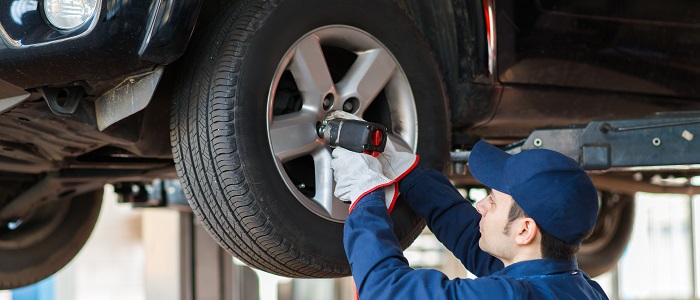When customers visit your business, they expect you to service their vehicles and return them in safe working order. Despite your best efforts, accidents can still happen. Tire dealer liability claims typically fall under two scenarios:
- Tires have come detached from a moving vehicle
- A vehicle’s safety system isn’t working properly
Both issues are serious, and the consequences can result in accidents, injuries, or even death. For instance, a man in British Columbia was hospitalized in 2022 after a detached tire flew into his windshield. Including the tips below in your risk management strategy can help protect your business and reduce potential liability.
Cover the basics
It’s always important to offer safe and reliable service, which is why it’s recommended that:
- Properly qualified personnel perform installation and service of tires and related equipment
- Appropriate equipment is used for tire installation and servicing
- Equipment should also be maintained regularly
- Quality control program for services and products should be in place and properly documented
- Customer complaints should always be properly documented and handled
Proper wheel torquing
Improper or unchecked torquing of wheel nuts are the most common causes we see for claims where wheels have come detached from moving vehicles.
- Over-torquing – when wheel nuts are tightened too much, studs can become stretched and rims can crack. This leads to excess force being placed on the remaining nuts and studs. Ultimately, this can weaken the surrounding hardware causing it to break, resulting in a detached wheel.
- Under-torquing – when wheel nuts are not tightened enough, it takes much less force to loosen them. If one or more fall off it leads to excess force being placed on the remaining hardware. This can also lead to a break and wheel detachment.
There are some products on the market that can provide assistance by either alerting when a wheel nut has lost torque, or preventing the wheel nuts from backing off. However, proper torquing by a qualified technician can be the best preventative measure. When the wheel nuts have been removed for tire repair or replacement, it’s essential that the wheel nuts be torqued to the manufacturer’s specifications. As a tire dealer, your obligation shouldn’t end there. Wheel nut tightness should be checked after a certain period of use, CAA recommends between 100-150 kilometres. The customer should be made aware of this requirement and be advised to return for a follow-up appointment. Keep a record and any documentation indicating that you advised the customer accordingly on file. Should a lawsuit arise, this could help protect you from potential liability. It’s common business practice to record this information directly on the customer’s invoice.
To help prevent claims and ensuing lawsuits, be sure to torque the wheel nuts to the manufacturer’s specifications and advise the customer to return for a follow-up appointment.
Tire Pressure Monitoring Systems
Tire dealers have a legal obligation to their customers to ensure a vehicles safety devices are in working order before it leaves the shop. Although repair of a Tire Pressure Monitoring System (TPMS) is not mandatory in Canada, it’s an important part of the overall vehicle safety system on vehicles where a TPMS is installed.
Tire dealers also have a legal obligation to ensure that the correct tire is installed on the vehicle, that the wheel and tire do not come off while driving, and that all safety systems are working properly. Whether a product is faulty or the work is done incorrectly, damages can go beyond physical damage to the vehicle; serious motor vehicle accidents can lead to bodily injury and even death.
Tire dealers have a higher level of tire expertise than the average consumer. Customers depend on their tire dealer for advice, so the dealer’s expertise must extend to the selection of tires, and to situations where the tires are unsafe or where there’s an unsafe mechanical condition. Tire dealers are obligated to warn the customer if an unsafe condition exists and to recommend the repair or replacement of tires or parts.
The best practice is to ensure that the TPMS system is fully functional when it leaves the shop and to refuse to do the work if a customer wishes to ignore or bypass the safety system. If you’re a tire dealer and you decide to do the work and/or release the vehicle, you could help limit your liability exposure by having the customer sign a waiver.
If the customer refuses to have the work completed, it’s imperative that the dealer document the unsafe condition on the invoice or work order. The dealer should also have the customer sign documentation that states they’re aware of the unsafe condition and refused to have the work completed. Courts have found repair garages responsible for accidents occurring from unsafe tires where the customer was not warned or where the dealer could not provide documentation to support the warning.
Make sure you’re covered
As a tire dealer, you always do your best to keep your customer’s safe and on the road. But sometimes even taking the right precautions isn’t enough. Despite your best efforts, things can go wrong quickly, and if that does happen, it’s important to have a safety net in place. That’s where business insurance comes in. To find out how Federated can help your tire dealer business, visit our business insurance page today!
This blog is provided for information only and is not a substitute for professional advice. We make no representations or warranties regarding the accuracy or completeness of the information and will not be responsible for any loss arising out of reliance on the information.







